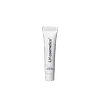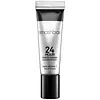What's inside
What's inside
 Key Ingredients
Key Ingredients

 Benefits
Benefits

 Concerns
Concerns

 Ingredients Side-by-side
Ingredients Side-by-side

Isododecane
EmollientDicalcium Phosphate
AbrasiveLauroyl Lysine
Skin ConditioningMica
Cosmetic ColorantTrimethylsiloxysilicate
EmollientDextrin Palmitate
EmulsifyingSilica Dimethyl Silylate
EmollientMicrocrystalline Wax
Emulsion StabilisingZinc Stearate
Cosmetic ColorantOctyldodecanol
EmollientDimethicone/Vinyl Dimethicone Crosspolymer
Skin ConditioningHydrogenated Styrene/Isoprene Copolymer
Cetyl Dimethicone
EmollientDimethicone
EmollientCaprylic/Capric Triglyceride
MaskingSilica
AbrasivePentaerythrityl Tetra-Di-T-Butyl Hydroxyhydrocinnamate
AntioxidantLaureth-4
EmulsifyingLavandula Stoechas Extract
MaskingIsododecane, Dicalcium Phosphate, Lauroyl Lysine, Mica, Trimethylsiloxysilicate, Dextrin Palmitate, Silica Dimethyl Silylate, Microcrystalline Wax, Zinc Stearate, Octyldodecanol, Dimethicone/Vinyl Dimethicone Crosspolymer, Hydrogenated Styrene/Isoprene Copolymer, Cetyl Dimethicone, Dimethicone, Caprylic/Capric Triglyceride, Silica, Pentaerythrityl Tetra-Di-T-Butyl Hydroxyhydrocinnamate, Laureth-4, Lavandula Stoechas Extract
Dimethicone
EmollientIsododecane
EmollientTalc
AbrasiveDimethicone Silylate
Trihydroxystearin
Skin ConditioningDisteardimonium Hectorite
StabilisingKaolin
AbrasiveHydrogenated Polyisobutene
EmollientPolyethylene
AbrasiveVp/Eicosene Copolymer
Trioctyldodecyl Citrate
EmollientTocopheryl Acetate
AntioxidantLecithin
EmollientTriethylhexanoin
MaskingBisabolol
MaskingSilica
AbrasiveAlumina
AbrasiveEthylene/Methacrylate Copolymer
Propylene Carbonate
SolventSorbitan Sesquioleate
EmulsifyingCaprylyl Glycol
EmollientStearic Acid
CleansingGlycyrrhetinic Acid
Skin ConditioningPEG-40 Stearate
EmulsifyingIsopropyl Titanium Triisostearate
EmollientPentaerythrityl Tetra-Di-T-Butyl Hydroxyhydrocinnamate
AntioxidantMica
Cosmetic ColorantCI 77891
Cosmetic ColorantIron Oxides
CI 77163
Cosmetic ColorantDimethicone, Isododecane, Talc, Dimethicone Silylate, Trihydroxystearin, Disteardimonium Hectorite, Kaolin, Hydrogenated Polyisobutene, Polyethylene, Vp/Eicosene Copolymer, Trioctyldodecyl Citrate, Tocopheryl Acetate, Lecithin, Triethylhexanoin, Bisabolol, Silica, Alumina, Ethylene/Methacrylate Copolymer, Propylene Carbonate, Sorbitan Sesquioleate, Caprylyl Glycol, Stearic Acid, Glycyrrhetinic Acid, PEG-40 Stearate, Isopropyl Titanium Triisostearate, Pentaerythrityl Tetra-Di-T-Butyl Hydroxyhydrocinnamate, Mica, CI 77891, Iron Oxides, CI 77163
Ingredients Explained
These ingredients are found in both products.
Ingredients higher up in an ingredient list are typically present in a larger amount.
Dimethicone is a type of synthetic silicone created from natural materials such as quartz.
What it does:
Dimethicone comes in different viscosities:
Depending on the viscosity, dimethicone has different properties.
Ingredients lists don't always show which type is used, so we recommend reaching out to the brand if you have questions about the viscosity.
This ingredient is unlikely to cause irritation because it does not get absorbed into skin. However, people with silicone allergies should be careful about using this ingredient.
Note: Dimethicone may contribute to pilling. This is because it is not oil or water soluble, so pilling may occur when layered with products. When mixed with heavy oils in a formula, the outcome is also quite greasy.
Learn more about DimethiconeIsododecane is a fragrance, emollient, and solvent.
As an emollient, it helps your skin stay soft and hydrated. Emollients help trap moisture into your skin.
Isododecane's role as a solvent makes it a great texture enhancer. It spreads smoothly on skin and does not leave a sticky feeling behind. Isododecane also helps prevent color transfer in makeup products.
Isododecane is not absorbed into skin.
Learn more about IsododecaneMica is a naturally occurring mineral used to add shimmer and color in cosmetics. It can also help improve the texture of a product or give it an opaque, white/silver color.
Serecite is the name for very fine but ragged grains of mica.
This ingredient is often coated with metal oxides like titanium dioxide. Trace amounts of heavy metals may be found in mica, but these metals are not harmful in our personal products.
Mica has been used since prehistoric times throughout the world. Ancient Egyptian, Indian, Greek, Roman, Aztec, and Chinese civilizations have used mica.
Learn more about MicaPentaerythrityl Tetra-Di-T-Butyl Hydroxyhydrocinnamate (long name, huh?) is a synthetic antioxidant.
It is used to help stabilize other antioxidants or prevent the color from changing in a product.
As an antioxidant, it helps fight free-radical molecules. Free-radical molecules are capable of damaging our cells and other genetic material. Thus, antioxidants may reduce the signs of aging.
This ingredient is oil-soluble.
Learn more about Pentaerythrityl Tetra-Di-T-Butyl HydroxyhydrocinnamateSilica, also known as silicon dioxide, is a naturally occurring mineral. It is used as a fine, spherical, and porous powder in cosmetics.
Though it has exfoliant properties, the function of silica varies depending on the product.
The unique structure of silica enhances the spreadability and adds smoothness, making it a great texture enhancer.
It is also used as an active carrier, emulsifier, and mattifier due to its ability to absorb excess oil.
In some products, tiny microneedles called spicules are made from silica or hydrolyzed sponge. When you rub them in, they lightly polish away dead skin layers and enhance the penetration of active ingredients.
Learn more about Silica